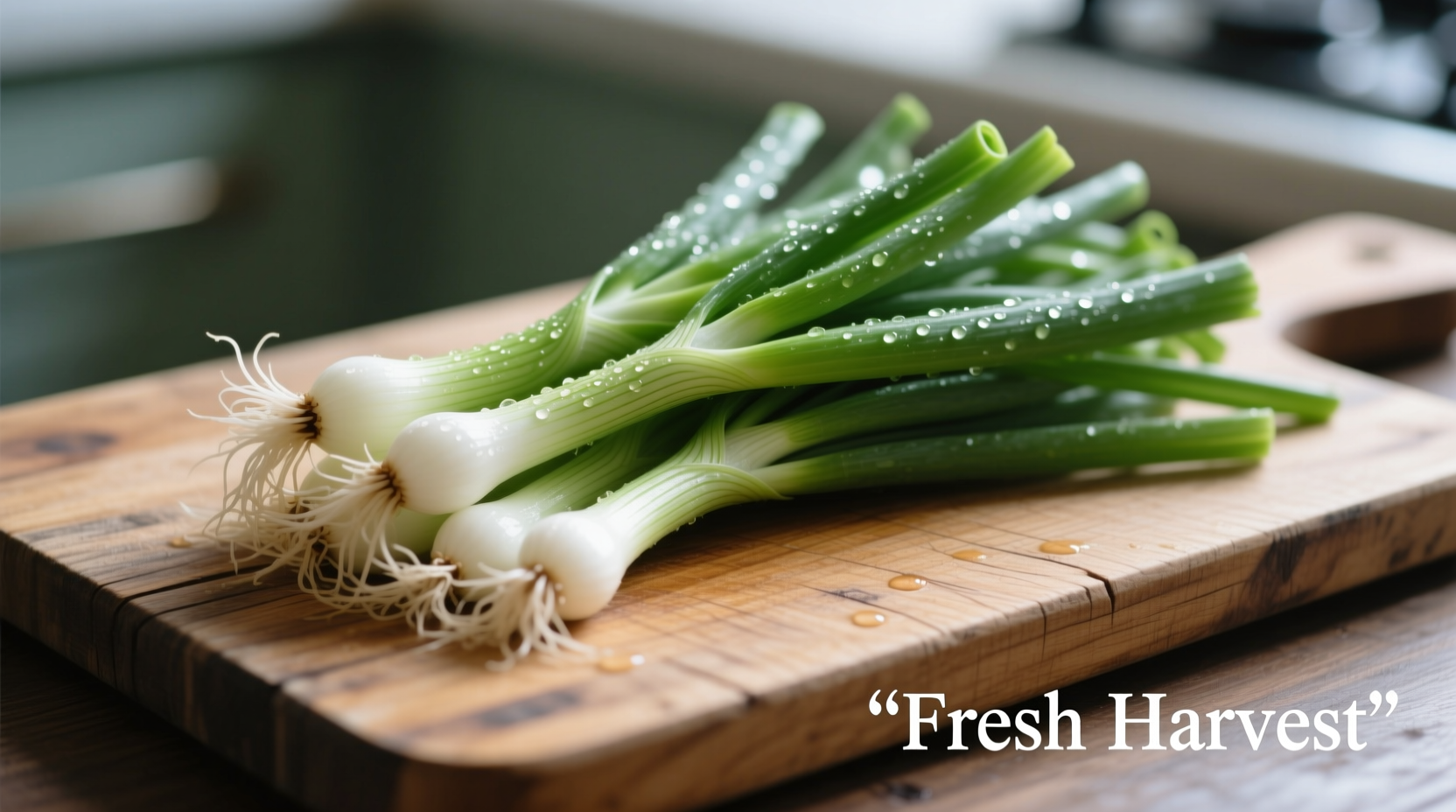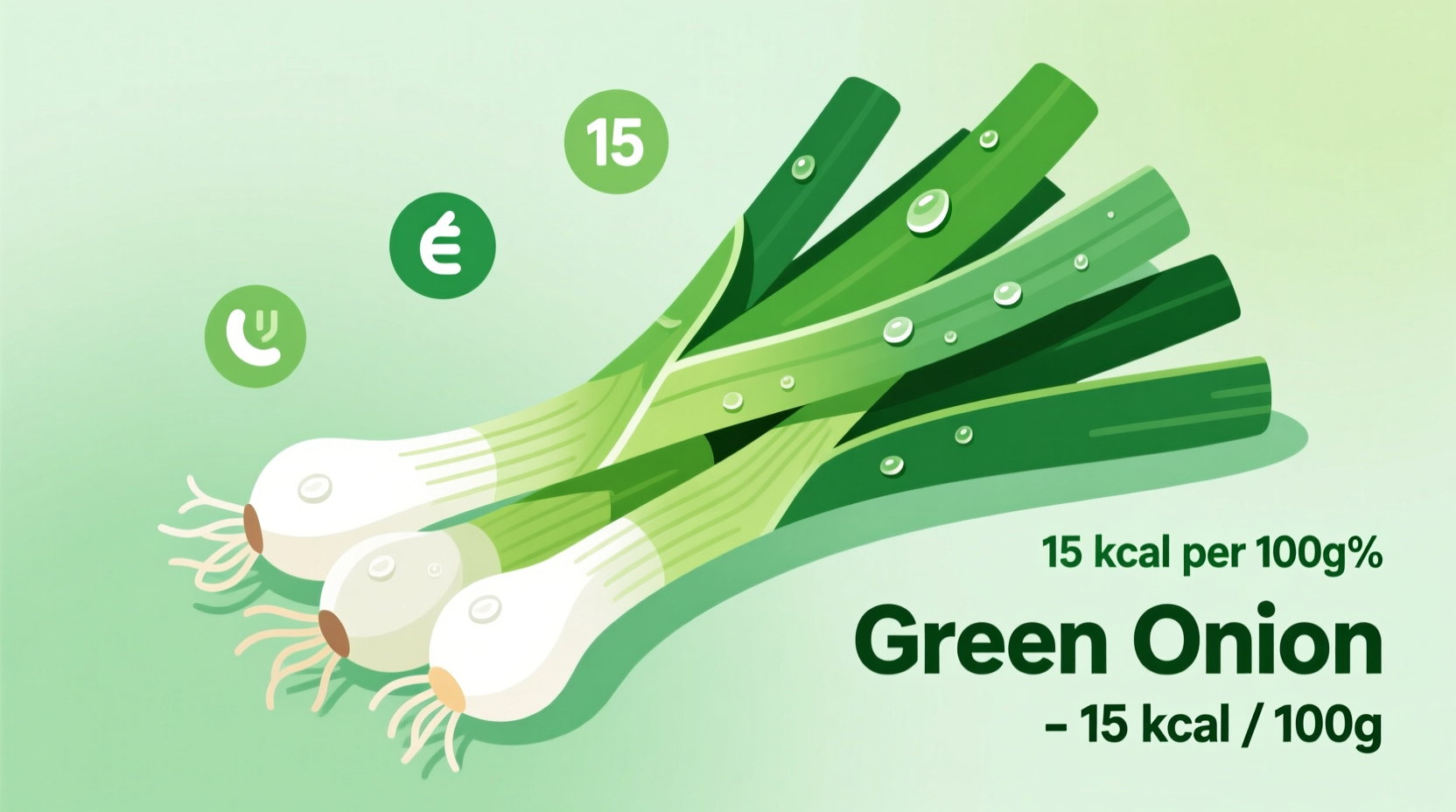One cup of chopped green onions (100g) contains just 32 calories, making them an exceptionally low-calorie addition to any meal. This nutrient-dense vegetable provides essential vitamins and minerals with minimal impact on daily calorie intake.
When you're tracking your nutrition, understanding the exact caloric value of ingredients like green onions becomes crucial for maintaining balanced eating habits. Whether you're following a specific diet plan or simply aiming for healthier choices, having accurate nutritional information at your fingertips helps you make informed decisions without sacrificing flavor.
Green Onion Nutrition Breakdown
Green onions, also known as scallions, offer impressive nutritional value for their minimal calorie count. According to the USDA FoodData Central, here's what you get in a standard 100g serving of raw green onions:
| Nutrient | Amount per 100g | % Daily Value* |
|---|---|---|
| Calories | 32 | 2% |
| Carbohydrates | 7.3g | 3% |
| Dietary Fiber | 2.6g | 9% |
| Vitamin K | 207mcg | 173% |
| Vitamin C | 18.8mg | 21% |
| Vitamin A | 1182IU | 24% |
*Percent Daily Values are based on a 2,000 calorie diet
How Green Onion Calories Compare to Other Vegetables
When evaluating vegetables for calorie-conscious eating, green onions stand out for their exceptionally low energy density. The table below shows how they compare to other common vegetables:
| Vegetable | Calories per 100g | Primary Nutritional Benefit |
|---|---|---|
| Green Onions | 32 | Vitamin K, Vitamin C |
| Spinach | 23 | Iron, Vitamin K |
| Celery | 16 | Hydration, Fiber |
| Broccoli | 55 | Vitamin C, Fiber |
| Carrots | 41 | Vitamin A, Beta-carotene |
This comparison reveals that green onions sit comfortably among the lowest-calorie vegetables while providing unique nutritional benefits. Their distinctive flavor profile means you can add substantial taste with minimal caloric impact.
Practical Serving Sizes and Calorie Counts
Understanding real-world serving sizes helps translate nutritional data into practical meal planning. Here's what you need to know about green onion portions:
- One medium green onion (28g): Approximately 9 calories
- 1/4 cup chopped (35g): About 11 calories
- 1 cup chopped (100g): 32 calories
- One bunch (85g): Roughly 27 calories
These measurements reflect raw green onions. Cooking methods can slightly alter the caloric density as water content changes, though the overall calorie count remains negligible regardless of preparation method.
Health Benefits Beyond Calorie Count
While the low calorie count makes green onions appealing for weight management, their nutritional profile offers additional health benefits worth noting:
Green onions contain significant amounts of vitamin K, which plays a crucial role in blood clotting and bone health. Just one cup provides more than 100% of your daily recommended intake. They also deliver substantial vitamin C, supporting immune function and skin health, plus vitamin A for eye health.
The fiber content in green onions (2.6g per 100g) contributes to digestive health and helps maintain stable blood sugar levels. Unlike many low-calorie vegetables, green onions also provide small amounts of calcium, potassium, and folate.

Contextual Factors Affecting Green Onion Nutrition
Several factors can influence the exact nutritional content of green onions:
- Growing conditions: Soil quality and climate can affect nutrient density
- Harvest time: Younger scallions may have slightly different nutrient profiles than more mature ones
- Storage duration: Nutrient levels gradually decrease over time after harvest
- Preparation method: Raw versus cooked affects nutrient availability
According to research published by the National Center for Biotechnology Information, allium vegetables like green onions contain organosulfur compounds that may offer cardiovascular benefits and potential anti-cancer properties. These compounds are most potent when the vegetable is consumed raw or lightly cooked.
Smart Ways to Incorporate Green Onions into Your Diet
Maximizing the nutritional benefits of green onions while keeping meals exciting is easier than you might think. Here are practical strategies:
- Add chopped green onions to omelets or scrambled eggs for flavor without extra calories
- Use as a garnish for soups and stews to enhance presentation and nutrition
- Create vibrant salad toppings that add crunch and flavor
- Blend into smoothies for a nutrient boost (use sparingly for best flavor)
- Make homemade green onion oil for cooking that captures their essence
For those following specific dietary patterns, green onions fit well into Mediterranean, DASH, and most plant-based eating approaches. Their versatility makes them valuable for anyone seeking to increase vegetable intake without significantly impacting daily calorie goals.
Common Misconceptions About Green Onion Nutrition
Several myths persist about green onion nutrition that deserve clarification:
- Myth: Green onions and regular onions have identical nutritional profiles
Fact: While related, green onions contain higher vitamin K and lower sugar content than mature onions - Myth: Cooking destroys all nutritional value in green onions
Fact: Light cooking can actually increase the availability of certain nutrients while preserving most benefits - Myth: The white and green parts have identical nutrition
Fact: The green portions contain more vitamin K and vitamin C, while the white bulbs offer slightly more fiber
Understanding these distinctions helps you make the most of green onions' nutritional potential in your daily meals.
Tracking Green Onion Calories in Meal Planning
For those using nutrition tracking apps, accurately logging green onions requires attention to detail:
- Weigh portions rather than estimating by volume for most accurate tracking
- Specify whether you're using just the green parts or the entire scallion
- Note if you're using fresh or dried (dried has higher calorie density per volume)
- Account for any added oils or seasonings when cooked
Nutrition professionals from the Academy of Nutrition and Dietetics recommend including green onions in your vegetable variety rotation. Their unique nutrient profile complements other vegetables, helping you achieve a more comprehensive range of micronutrients throughout the week.











 浙公网安备
33010002000092号
浙公网安备
33010002000092号 浙B2-20120091-4
浙B2-20120091-4